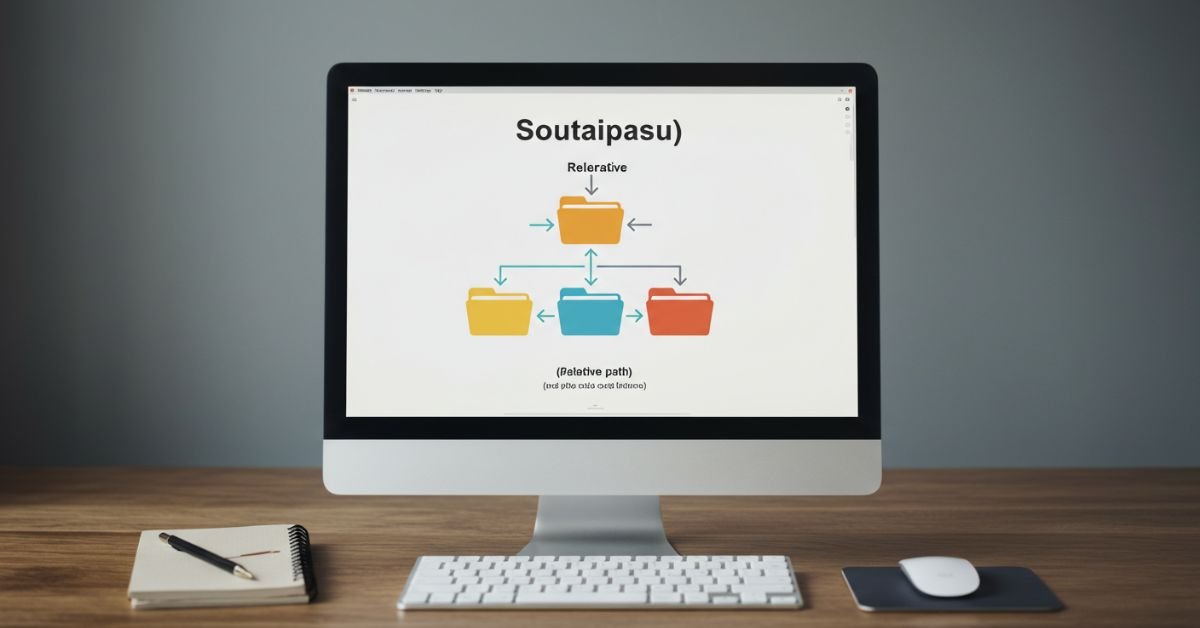Contents
Introduction
In the world of technology, small concepts often play the biggest roles in shaping user experiences. One such concept is Soutaipasu, a Japanese word that translates to relative path. While the term may sound technical, its function is simple yet powerful. Soutaipasu is all about guiding computers to the right place where files and resources are located, without requiring a long and absolute address. This seemingly minor feature is an essential element in programming, web development, software design, and even file management in everyday computing.
In this article, we will explore Soutaipasu in detail—its meaning, role, importance, challenges, and why it continues to remain vital in the digital age.
What is Soutaipasu?
Soutaipasu, or relative path, is a way of pointing to a file or resource based on its relationship to the current working location, instead of giving a complete fixed location. For example, instead of writing out the entire route to a file stored deep inside a computer’s system, developers can use a relative path that looks shorter and easier to understand.
This method is not just about saving time; it also improves flexibility. If a project is moved from one folder to another, the Soutaipasu ensures the connections still work, as long as the relative positions of the files remain the same.
Why Soutaipasu Matters
Soutaipasu may look like a small detail, but it solves a major problem for programmers and computer users alike. Without relative paths, managing projects would be much harder. Imagine building a website with dozens of images and scripts. If you used absolute paths, any slight movement of files would break the entire project. Soutaipasu prevents that frustration by keeping paths independent of the root location.
This flexibility is what makes it indispensable in many areas: web development, mobile apps, game design, and even everyday file management.
Soutaipasu in Web Development
Perhaps the most common use of Soutaipasu is in building websites. Developers often link images, stylesheets, or scripts to web pages. If they used absolute addresses like C:/Users/Desktop/Project/images/logo.png, the website would fail to load on another computer. But with Soutaipasu, they can simply write ./images/logo.png, which works as long as the image remains in the same relative folder.
This makes websites more portable and easier to share across different environments. For teams working together, it is a game changer because it ensures consistency no matter where the project is opened.
Soutaipasu in Software Projects
Beyond websites, Soutaipasu also appears in larger software projects. Developers frequently divide code into multiple files, such as libraries, modules, and resources. Using relative paths allows them to connect these pieces smoothly. For instance, in a Python project, one module may call another using a relative route. This keeps the project cleaner and avoids the clutter of long absolute paths.
In addition, software updates become easier with relative paths. If the entire project folder is shifted to a new location, the links between files still function correctly, as their relative positioning has not changed.
Everyday Use of Soutaipasu
Even outside programming, Soutaipasu plays a role in daily life. When a user opens a file through a shortcut that points to a relative location, they are unknowingly benefiting from this concept. File compression tools, such as ZIP and RAR archives, also use relative paths to store the relationships between files, ensuring they unpack correctly regardless of where the archive is placed.
In cloud-based platforms, relative paths make collaboration possible by ensuring that shared files maintain their internal structure, no matter where they are downloaded.
Advantages of Soutaipasu
The strengths of Soutaipasu are numerous. First, it creates flexibility by making files and projects portable. Second, it saves time and effort because developers do not need to rewrite paths every time a project moves. Third, it ensures efficiency by reducing clutter in code and keeping projects organized.
Another important benefit is team collaboration. When multiple people work on the same project, relative paths allow each member to run the project on their own machines without extra adjustments. This is why Soutaipasu is highly valued in professional environments.
Challenges and Limitations
However, Soutaipasu is not without its difficulties. One common challenge is confusion. Beginners often struggle to understand how relative paths work, especially when navigating multiple nested folders. A small mistake like missing a ../ can result in broken links and wasted hours of debugging.
Another limitation arises when files need to be accessed from outside the project folder. In such cases, absolute paths may still be required. Similarly, some large-scale systems prefer absolute paths for clarity, as relative paths can become complex in deep directory structures.
Soutaipasu vs. Absolute Path
To fully appreciate Soutaipasu, it helps to compare it with its counterpart: the absolute path. An absolute path tells the system exactly where to find a file, starting from the root. It is precise, but not flexible. Soutaipasu, on the other hand, adapts to the file’s position relative to the current folder.
In practice, both have their place. Absolute paths are useful when pointing to fixed resources, while Soutaipasu is better for projects that need to move or be shared. The true skill lies in knowing when to use each.
The Future of Soutaipasu
As technology advances, will Soutaipasu still matter? The answer is yes. Even in cloud computing and containerized environments, relative paths remain crucial. They allow portable projects to run across different machines, servers, and platforms without breaking.
Modern tools and frameworks continue to rely on Soutaipasu because it aligns perfectly with the demand for mobility, efficiency, and collaboration in the digital era. It is safe to say that Soutaipasu will remain a backbone of software and web development for years to come.
Conclusion
Soutaipasu may appear like a technical detail, but its importance is undeniable. It simplifies coding, strengthens collaboration, and ensures projects remain functional across different environments. From web development to software design and even everyday file usage, Soutaipasu quietly ensures that technology works smoothly behind the scenes.
For beginners, understanding this concept is one of the first steps toward mastering programming. For professionals, it is an everyday tool that saves countless hours of work. Whether in Japan or across the globe, Soutaipasu proves that sometimes the smallest ideas can have the biggest impact on technology.


